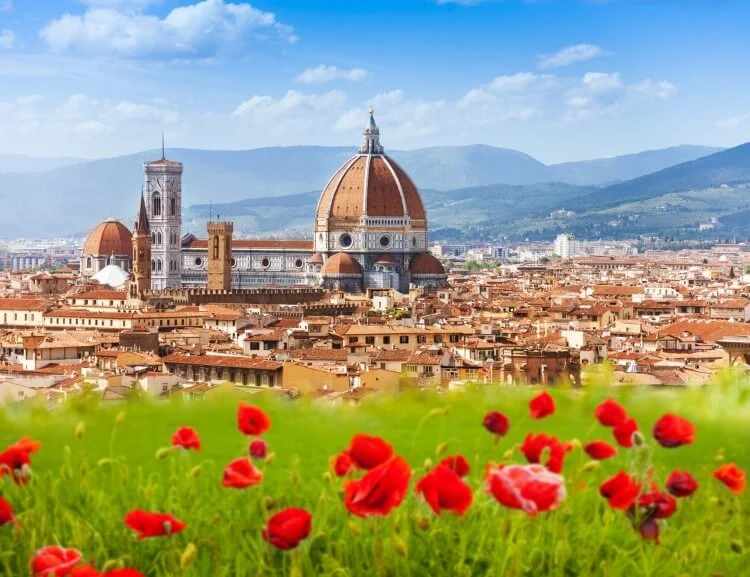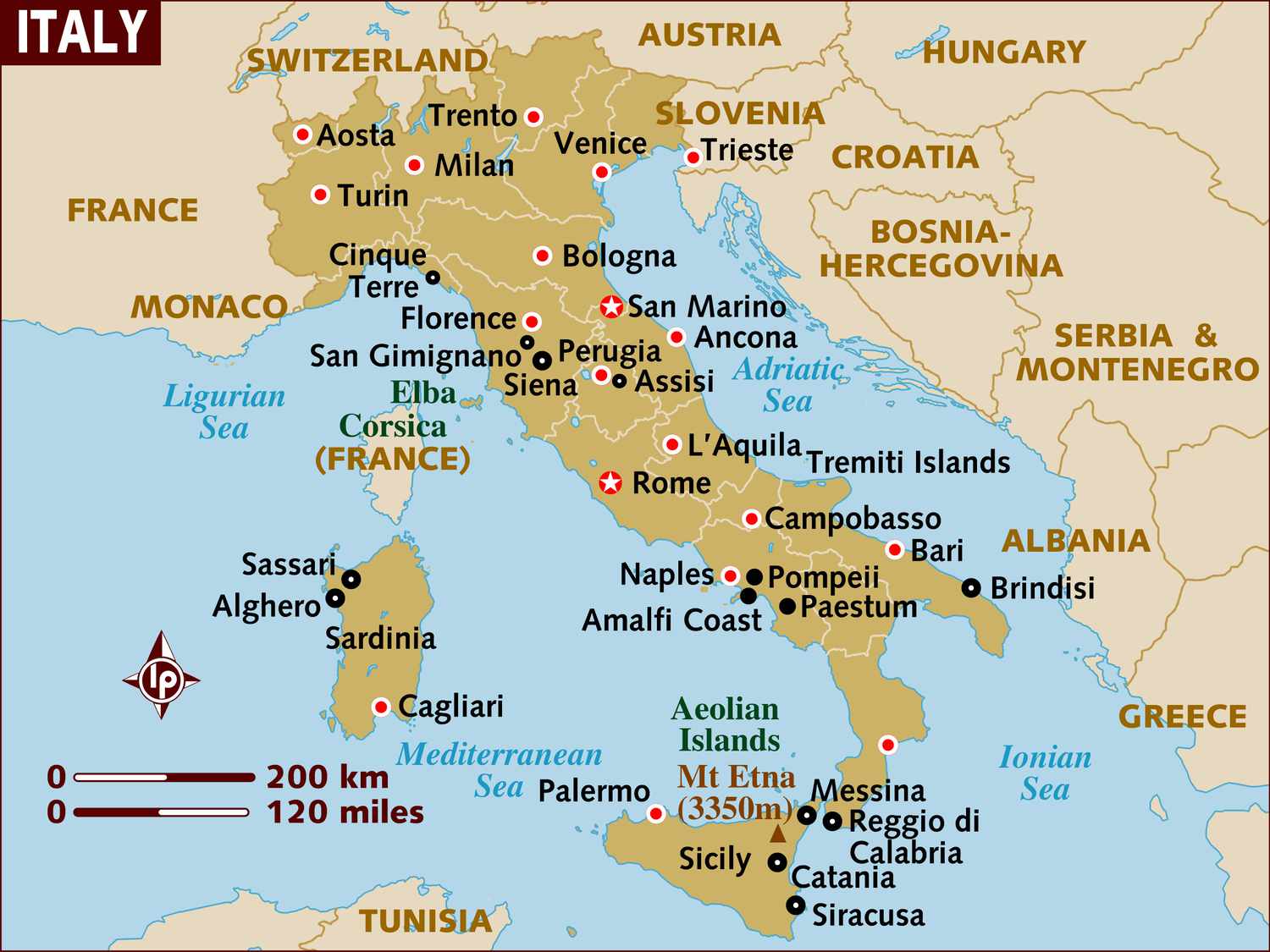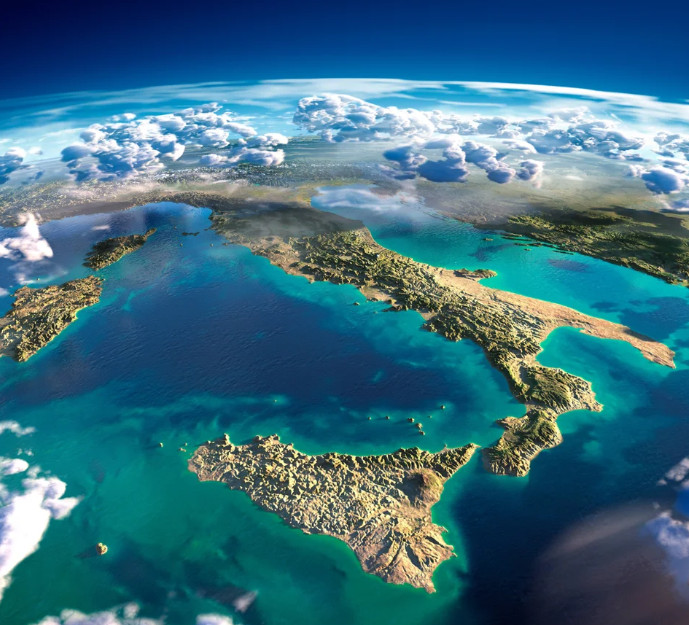Italy’s weather predominantly reflects the Mediterranean pattern, typified by scorching, arid summers and chilly, wet winters. Spanning nearly 1,200 kilometers from north to south, Italy boasts an array of sub-climates and micro-climates, leading to substantial seasonal variations that diverge from national averages. The impact of global climate change is evident in Italy, manifesting in heightened instances of extreme weather and consistently warmer temperatures throughout the year.
Travelers visiting Italy should anticipate sultry, sun-drenched summers, moderately cold winters characterized by abundant rainfall and sparse snowfall, and transitional seasons in autumn and spring that oscillate between pleasant sunshine and damp, brisk conditions.
What is the Weather in Italy year-round?
Italy boasts a diverse climate, varying from region to region, offering something for every traveler year-round. Summers are typically hot and dry, particularly in the southern regions, with temperatures ranging from 25°C to 35°C (77°F to 95°F). Coastal areas experience refreshing sea breezes, while inland regions may be hotter.
Autumns bring cooler temperatures, ranging from 10°C to 20°C (50°F to 68°F), with occasional rainfall, especially in the north. This season offers picturesque landscapes with vibrant foliage, ideal for exploring Italy’s countryside.
Winters are generally mild in the south, with temperatures rarely dropping below 10°C (50°F), while the northern regions experience cooler temperatures ranging from 0°C to 10°C (32°F to 50°F), with snowfall in mountainous areas. Spring heralds the return of warmer weather, with temperatures rising from 15°C to 25°C (59°F to 77°F). It’s a perfect time to witness Italy’s blooming flora and enjoy outdoor activities.
The Weather in Central Italy
Given that Rome and Florence are typical stops for most travelers, let’s delve into central Italy, encompassing the regions of Lazio (home to Rome), Umbria, Tuscany (where Florence is located), Le Marche, and Abruzzo. This area offers a quintessential experience of Italy. In the bustling tourist hub stretching from Rome up to Florence and throughout Tuscany, you’ll encounter distinct seasonal changes. Summers are characterized by dry heat, often soaring into the high 30s Celsius (high 90s Fahrenheit) and occasionally exceeding 40 degrees Celsius (104 degrees Fahrenheit).

To make the most of your sightseeing, it’s advisable to explore during the cooler mornings and late afternoons, seeking refuge indoors or in the shade during the sweltering midday hours. Winters in this region tend to be wet and mild, with temperatures rarely dipping below freezing. While sunny but brisk days are not uncommon, cloudy skies prevail more frequently. Moving towards the eastern mountainous areas of Abruzzo and Le Marche, you’ll notice a shift in climate. Summertime temperatures may be cooler here, and winters harsher, often marked by regular snowfall.
Weather in Northern Italy
In the northern regions of Italy including Emilia-Romagna, Liguria, Piedmont, Lombardy, Veneto, and Fruili-Venezia Giulia, the climate tends to be characterized by mild summers and chilly winters, often accompanied by snowfall. However, these weather patterns can be unpredictable at times. Cities like Milan and Venice, despite their northern location, have experienced intense heat waves during summer, with temperatures above 40°C (104°F).
Throughout the winter season, except in the highest elevations, temperatures remain cold but not excessively frigid, making umbrellas more necessary than snow boots. Milan is renowned for its foggy conditions in autumn and winter, while in Venice, the period from November to February sees a heightened risk of acqua alta, or extreme high tides.

The Weather in Southern Italy
The southern Italian regions encompassing Campania, Molise, Puglia, Basilicata, and Calabria, along with the picturesque island of Sicily, boast scorching summers that draw crowds to their renowned beaches. Expect days filled with relentless sunshine and heat, tempered slightly by cooler evenings.
Winter along the coastlines brings gusty winds, heavy rainfall, and chilly temperatures, while inland areas often witness snowfall. Notably, Sicily’s Mt. Etna hosts a ski resort during the winter months, offering a unique blend of sun and snow recreation. Similarly, Sardinia, situated off the coast of Lazio and Campania, experiences sweltering summers and predominantly mild winters, making it an appealing destination year-round.
Summer Weather in Italy
June, July, and August usher in scorching heat and stifling humidity across much of Italy, notably in bustling hubs like Rome and Florence. These months also mark the pinnacle of tourist activity, drawing in families and school excursions. With daylight stretching well past 9 p.m., museums and historical sites extend their operating hours, while eateries spill onto sidewalks, bustling with patrons.
Yet, amidst the sweltering temperatures and throngs of visitors, there’s an undeniable allure to experiencing Italy during this time. However, it’s crucial to be prepared for the intensity of both the weather and the crowds. The midday sun can be relentless, posing not just discomfort but genuine health risks. Given the scarcity of green spaces in many Italian cities, seeking refuge in air-conditioned museums during peak heat hours is advisable. Then, as the sun begins to relent, embrace the tradition of alfresco dining or leisurely evening strolls along bustling streets.
For those retreating to coastal areas, the Mediterranean waters offer respite, reaching their zenith in warmth, ideal for refreshing swims. It’s worth noting the local custom of vacating beaches around 1 p.m. to indulge in a leisurely lunch, returning only after the sweltering midday heat has subsided around 4 p.m. Navigating Italy’s summertime charm requires a blend of adaptability and precaution, ensuring an unforgettable experience amidst the heat and vibrant energy of the season.
Italy’s Weather in Winter
Winter in Italy offers diverse experiences depending on your location within the country. From picturesque scenes reminiscent of Currier and Ives to biting cold and blustery winds, the season presents a spectrum of conditions.
In the ski havens of Valle d’Aosta and Trentino Alto Adige, the winter charm is at its peak, with resorts bustling with activity. However, in other parts of northern Italy, snowfall may be scant, and temperatures cold yet not excessively so. Central Italy experiences moderate coldness coupled with gusty winds, particularly in rural areas, although urban centers are less affected. Coastal regions endure raw conditions characterized by strong winds, rough seas, and occasional rain showers.
Despite the chill, December ushers in a lively atmosphere in cities as streets bustle with holiday shoppers and tourists. The Vatican becomes a focal point for Christmastime masses and papal audiences, drawing crowds from near and far. January and February offer a quieter alternative for exploring Italy’s cities without the usual throngs of visitors, often accompanied by stretches of clear, sunny days.
